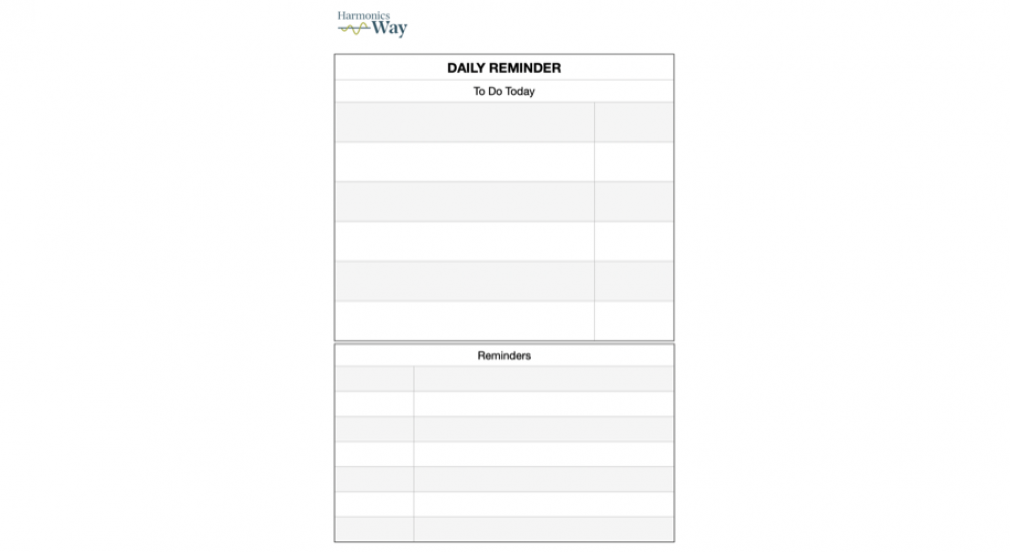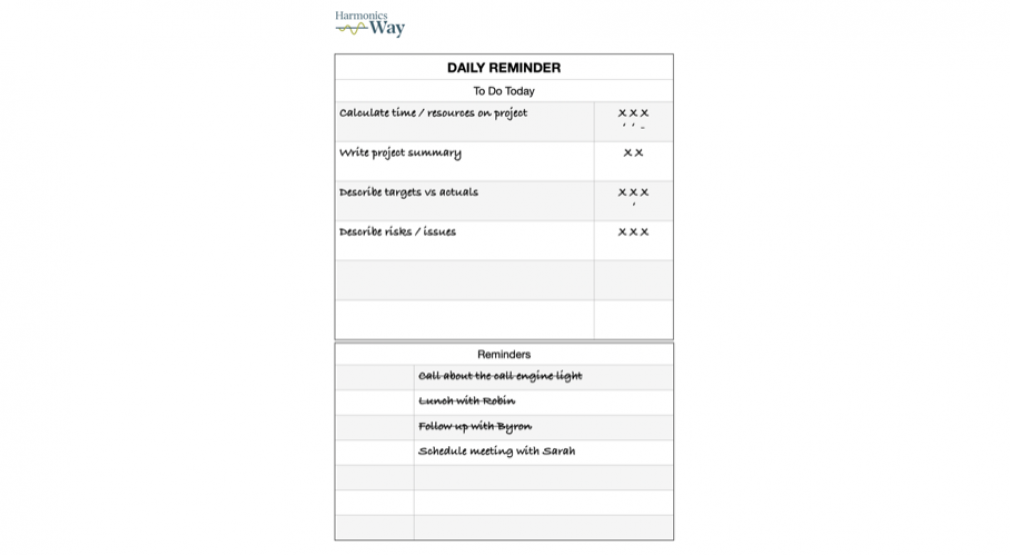When we are completely engaged in a task (in a state of flow) time stand still and enjoyment of the task is heightened. The Pomodoro Technique is a practical tool to help you focus and increase your ability to experience flow, which are some of the happiest moments of your life.
Take a minute to consider those moments when you are completely engaged in an activity. In his book Flow, Mihaly Csikszentmihaly explains that these experiences of complete engagement (being in the state of flow) are among the happiest moments in a person's life. [1]
Csikszentmihaly outlines three conditions needed for a person to be wholly engaged in a task: a goal, clear and immediate feedback of progress toward the plan, and a balance between challenge and skill (meaning our skill matches the demand of the challenge). Wouldn't it be nice to have a tool that helps create the environment for these happiest moments to occur more often?
A daily planning and time management technique called the Pomodoro Technique does this. The Pomodoro Technique was developed by Francesco Cirillo in 1992 and has become popular among high performers over the last few years. The primary goal of the technique is to improve productivity and focus. It is a convenient tool to help get into the flow, even when motivation may lag. [2]
A basic implementation of the technique only requires a simple timer, a prioritized list of things to do, and a place to record unplanned or urgent activities. When Cirillo first developed the technique, he used a tomato-shaped kitchen timer. Pomodoro is the Italian word for tomato, thus the name Pomodoro Technique.
The figure below presents an example of a form you can use for recording the prioritized list of things to do and other activities. [Download PDF]

The To-Do List comprises tasks that you expect to complete in a 30-minute to 4-hour time span. This is not the to-do list for simple tasks that only take a few minutes. It is best suited for tasks that require focus, such as clearing out email, thinking, studying, writing, and designing. Yet the tasks should be small enough that you can expect to complete them in the time allotted.
There are plenty of times that you have a task that will take longer than 4 hours or a job that you do not know how to accomplish at all. The Pomodoro Technique is excellent for this situation as it encourages you to plan out a method of attack. Rather than planning to perform the entire task, break the task into smaller subtasks that can be completed within the 4-hour window. Some of those subtasks may include a list of topics to learn about to accomplish the primary task.
For example, imagine that you have to write a report at the end of a project. This massive task can be completed with many smaller subtasks. One job may be to calculate the time and resources spent on the project. Other duties include writing the project summary, facts on the project's progress, target vs. actual accomplishments, risks and issues, and a description of the resources spent on the project. These subtasks could require more than 30 minutes to complete, yet be done in less than 4 hours. So, write out each task on the To-Do List.
As you begin to work on the first task, set the timer for 25 minutes, and focus on that task. Assuming that you could focus for the entire 25 minutes on the task, place an X next to the task, and set the timer again for 5 minutes. Take a 5-minute break in which you get a drink, use the restroom, or sit quietly. Do not open your email or check your phone, or engage with any other activity during the break. At the end of the break, set the timer for another 25 minutes, and continue working on the task. Repeat this 25 minutes of work followed by a 5-minute break for four repetitions (2 hours total). At the end of the 2 hours, take a 15-minute break.
Continue this process until the task is complete. Once the task is finished, move to the next one. Sometimes you will wrap up a job in the middle of a 25-minute session. Cirillo suggests that you take the remaining time to calmly recheck your work. Many Pomodoro users just move on to the next task.
The best part of the Pomodoro Technique is its ability to help you manage interruptions. There are typically two types of interruptions: external and internal. External interruptions come from other people or events outside of your control. An internal distraction may occur when you remember to do something that you had forgotten, or a tangential thought pops into your head as you are working.
During a 25-minute increment of work, a Pomodoro, you may get interrupted by coworkers, or phone calls, or other people. When someone interrupts you, ask them if you can wait until the end of a Pomodoro, or even a couple of hours. Then make a note to get back to that person on your To-Do list.
An internal interruption occurs when your mind wanders a bit during that 25 minutes. Say you remember that you forgot to pay a bill or forgot to change the laundry in the dryer. As those things come to mind, write them down on your To-Do list and then get back to them at another time. This way, your brain isn't focused on remembering things and can relax to focus on the task at hand.
If you are curious about the number of interruptions you have during a day, you can record them on the To-Do list. Mark internal interruptions with a "`" and external disruption with a "-." When you have an internal interruption, mark the task you are currently working on with a "`" and write a reminder at the bottom of the To-Do list. Do the same for the external interruptions as well. After a full day of working on the report, your To-Do List may look like the example below.
 Similar to Personal Kanban, the Pomodoro Technique provides an environment in which you can get into the flow state. At the beginning of each day, you make a list of goals for the day. As you work through that list and mark the tasks with Xs, you can use this feedback as an indicator that progress toward the goal is being made. As you make the To-Do list, make sure that all of the tasks are accomplishable tasks. If you are not sure how to complete a task, add to-dos to your list for that day that will help you increase your skill and prepare you to meet the challenge.
Similar to Personal Kanban, the Pomodoro Technique provides an environment in which you can get into the flow state. At the beginning of each day, you make a list of goals for the day. As you work through that list and mark the tasks with Xs, you can use this feedback as an indicator that progress toward the goal is being made. As you make the To-Do list, make sure that all of the tasks are accomplishable tasks. If you are not sure how to complete a task, add to-dos to your list for that day that will help you increase your skill and prepare you to meet the challenge.With a little practice, the Pomodoro Technique may become one of your best tools to keep you focused and increase your ability to experience flow. And flow experiences, times of complete engagement in a task, are some of the happiest moments of your life.
[1] Csikszentmihalyi, M. 2008. Flow: The Psychology of Optimal Experience. Harper Perennial Modern Classics. [Available at Amazon]
[2] This Time-Management Trick Changed My Whole Relationship With Time
[3] Download Harmonics Way Pomodoro Sheet